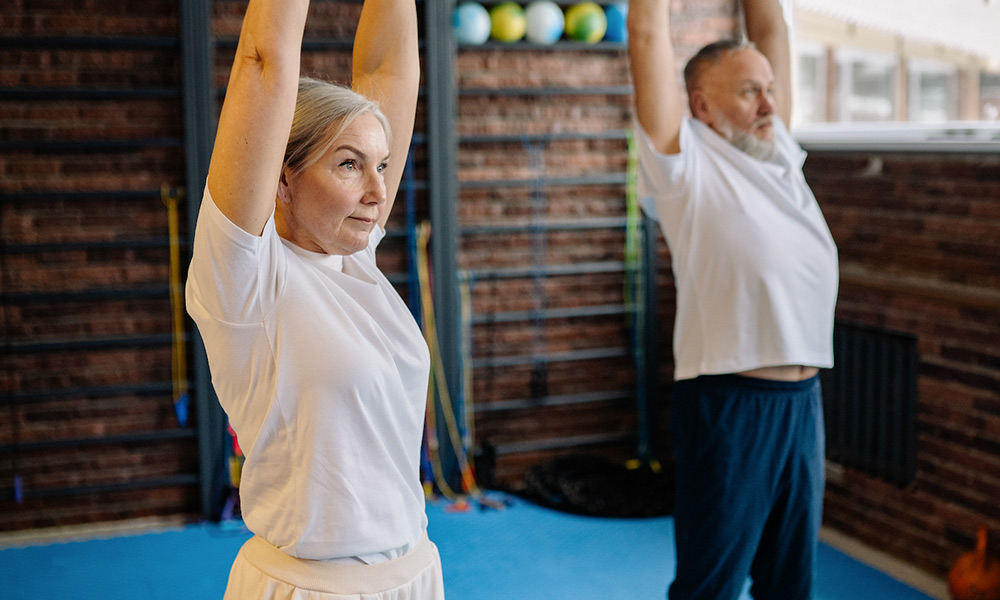Have you considered taking up yoga? You may be surprised at how much of a balanced, centering effect that this calming practice can have on your body and the benefits that come along with it. From better sleep to increased strength, a consistent yoga practice has something to offer everyone—including cancer survivors, according to the American Cancer Society, which suggests that yoga can help to alleviate some of the symptoms associated with cancer. If you think you might be interested in yoga, here are four benefits of yoga for cancer survivors.
1. Better Sleep
Stretching and flowing through the motions of yoga can lower your cortisol levels (a stress hormone). It can also lower your blood pressure and release tension in your body. These effects add up to a more restful sleep with less stress and fewer aches and pains. Yoga is also a great way to wind down for bed if you’re feeling restless. Try a bedtime yoga sequence to help you clear your mind and soothe your body.
2. Relaxation
Yoga helps you to center your mind and body through a myriad of relaxation techniques, such as stretching, breathing, and in some cases, meditation and aromatherapy. Many find yoga to be a wonderful way to take time for themselves to focus on their physical and mental wellness. Try fitting yoga into your weekly routine to relax and unwind from your busy day-to-day.
3. Improved Mobility
Yoga’s slow movements and breathing patterns increase blood flow to your muscles, improving overall flexibility and circulation and allowing a better range of motion during your daily activities or while doing other types of exercise. A consistent yoga practice can help you work toward your next physical goal or even simply make everyday tasks easier.
4. Increased Strength
Yoga can help you build strength without ever touching a piece of equipment. Many assume that yoga only improves flexibility; however, it actually can increase your strength, too, as you hold certain poses and cycle through vinyasa movements. A tree pose, for example, strengthens your core muscles as you tighten your midsection to stay upright. Throughout your session, you’ll soon feel your muscles engaging, tightening, and stretching, which will make you stronger over time.
Searching for a Path to Better Health?
Survivor Fitness works with cancer survivors to regain their health and wellness through one-on-one personal training and nutritional support. We walk alongside you to progress your post-treatment recovery, empowering you to take control of your healing journey. Connect with us today to learn more!
[/fusion_text][/fusion_builder_column][/fusion_builder_row][/fusion_builder_container]








